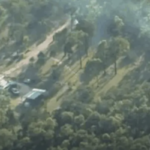New Federal Hate Crime Offences and Penalties in Australia

The Criminal Code Amendment (Hate Crimes) Bill 2025 (Cth) was passed by both houses of the federal parliament on 6 February 2025 and will soon come into force across Australia.
The Bill amends the Criminal Code Act (Cth) (‘the Act’) by expanding the scope of existing hate-related offences, inserting new hate crime offences, and also amends the Crimes Act 1914 (Cth) by introducing mandatory minimum prison sentences for a number of hate and terrorism offences.
Here are the changes.
Criminal Code Act 1995: Division 80
Division 80 of the Act spans from section 80.1 to 80.6 and deals with a range of insurgency and hate-related offences, from treason, to urging violence against particular groups and members thereof, to advocating terrorism, and displaying and dealing in prohibited symbols.
Advocating force or violence against groups
Until now, section 80.2A of the Act has contained the offence of urging violence against groups which carries a maximum penalty of 5 years in prison.
To establish the offence, the prosecution has been required to prove beyond reasonable doubt that:
- A person intentionally urged another or others to use force or violence against a group,
- The person intended the force or violence to be carried out, and
- The targeted group was distinguished by race, religion, nationality, national or ethnic origin or political opinion.
The maximum increases to 7 years in prison where it is additionally established that the use of force or violence threatened the peace, order and good government of the Commonwealth.
Under the amendments, this offence has been changed to ‘Advocating force or violence against groups’ which prescribes a maximum penalty of 5 years in prison where the prosecution is able to prove beyond reasonable doubt that:
- A person advocated the use of force or violence against a group,
- The person was reckless as to whether the force or violence would be carried out, and
- The targeted group was distinguished by race, religion, sex, sexual orientation, gender identity, intersex status, disability, nationality, national or ethnic origin or political opinion.
The maximum increases to 7 years in prison where it is additionally established that the use of force or violence threatened the peace, order and good government of the Commonwealth.
The changes greatly broaden the scope of the offence, capturing all advocating – which encompasses counselling, promoting, encouraging or urging – rather than requiring the act of positively urging, as well as expanding the groups to which it applies.
It also means a person merely needs to be reckless as to whether the force or violence would be carried out, rather than having intended for it to occur.
A person is ‘reckless’ if aware there was a substantial risk the force or violence would occur against the group and, having regard to the circumstances known to the person, it was unjustifiable to take that risk, but he or she went ahead with the conduct regardless.
Advocating force or violence against members of groups or close associates
Until now, section 80.2B of the Act has contained the offence of urging violence against members of groups which carries a maximum penalty of 5 years in prison.
To establish the offence, the prosecution has been required to prove beyond reasonable doubt that:
- A person intentionally urged another person or group to use force or violence against another person,
- The person did so intending that force or violence would occur,
- The person did so due to a belief the targeted person was a member of a group, and
- The other person was distinguished by race, religion, nationality, national or ethnic origin or political opinion.
The maximum increases to 7 years in prison where it is additionally established that the use of force or violence threatened the peace, order and good government of the Commonwealth.
Under the amendments, this offence has been changed to ‘Advocating force or violence against members of groups or close associates’ which prescribes a maximum penalty of 4 years in prison where the prosecution is able to prove beyond reasonable doubt that:
- A person advocated the use of force or violence against another person,
- The person was reckless as to whether force or violence would occur,
- The person did so due to a belief the other person was a member of a group, or a close associate of a member of a group, and
- The other person was distinguished by race, religion, sex, sexual orientation, gender identity, intersex status, disability, nationality, national or ethnic origin or political opinion.
The maximum increases to 7 years in prison where it is additionally established that the use of force or violence threatened the peace, order and good government of the Commonwealth.
It is immaterial as to whether the other person was actually a member of the targeted group, or a close associate of a member of the group.
The changes greatly broaden the scope of the offence, capturing all advocating – which encompasses counselling, promoting, encouraging or urging – rather than requiring the act of positively urging, as well as expands the groups to which it applies, and extends to include the close associates of such members.
The changes greatly broaden the scope of the offence, capturing all advocating rather than having to provide actual urging, as well as expands the group members to which it applies and the close associates of these members.
It also means a person merely needs to be reckless as to whether the force or violence would be carried out, rather than having intended for it to occur.
A person is ‘reckless’ if aware there was a substantial risk the force or violence would be perpetrated against a member of a group or the person’s close associate and, having regard to the circumstances known to the person, it was unjustifiable to take that risk, but the person went ahead with the conduct regardless.
Threatening force or violence against groups
The Bill inserts the new offence of threatening force or violence against groups, which is contained in section 80.2BA of the Act and carries a maximum penalty of 5 years in prison.
To establish the offence, the prosecution must prove beyond reasonable doubt that:
- A person threatened to use force to violence against a group,
- The group was distinguished by race, religion, sex, sexual orientation, gender identity, intersex status, disability, nationality, national or ethnic origin or political opinion, or the person was reckless as to whether they were or not, and
- A reasonable member of the group would fear or apprehend that the threat would be carried out
The maximum increases to 7 years in prison where it is additionally established that the threat would threaten the peace, order and good government of the Commonwealth.
A person is ‘reckless’ if aware there was a substantial risk the group was distinguished by the described characteristics, and it was unjustifiable to take that risk, but the person went ahead with the conduct regardless.
To advocate includes to counsel, promote, encourage or urge.
Threatening force or violence against members of groups or close associates
The Bill also inserts the new offence of threatening force or violence against members of groups or close associates, which is contained in section 80.2BB of the Act and carries a maximum penalty of 5 years in prison.
To establish the offence, the prosecution must prove beyond reasonable doubt that:
- A person threatened to use force or violence against another person,
- The person did so due to a belief or recklessness as to whether the other person was a member of a group, or a close associate of a member of a group,
- The group was distinguished by race, religion, sex, sexual orientation, gender identity, intersex status, disability, nationality, national or ethnic origin or political opinion, or the person was reckless as to whether they were or not, and
- A reasonable member of the said group would fear or apprehend that the threat would be carried out; and
The maximum increases to 7 years in prison where it is additionally established that the threat of force or violence would threaten the peace, order and good government of the Commonwealth.
It is immaterial as to whether the other person was actually a member of the targeted group, or a close associate of a member of the group.
A person is ‘reckless’ if aware there was a substantial risk the group was distinguished by the described characteristics, and it was unjustifiable to take that risk, but the person went ahead with the conduct regardless.
Advocating damage to or destruction of real property or motor vehicle
The Bill also inserts the new offence of advocating damage to or destruction of real property or motor vehicle, which is contained in section 80.2BC of the Act and carries a maximum penalty of 5 years in prison.
To establish the offence, the prosecution must prove beyond reasonable doubt that:
- A person advocated the causing of damage to, or the destruction of, real property or a motor vehicle,
- The person did so due to a belief, whether correct or not, that:
- the real property was a place of worship of a group,
- the real property was owned or occupied, in whole or in part, by one or more members of a group,
- the motor vehicle was owned or occupied, in whole or in part, by one or more members of a group,
- the real property was owned or occupied, in whole or in part, by a close associate of one or more members of a group, or
- the motor vehicle was owned or occupied, in whole or in part, by a close associate of one or more members of a group,
- The person was reckless as to whether the damage or destruction would occur; and
- The group was distinguished by race, religion, sex, sexual orientation, gender identity, intersex status, disability, nationality, national or ethnic origin or political opinion, or the person was reckless as to whether they were or not.
The maximum increases to 7 years in prison where it is additionally established that the damage or destruction would threaten the peace, order and good government of the Commonwealth if it were to occur.
A person is ‘reckless’ if aware there was a substantial risk the group was distinguished by the described characteristics, and it was unjustifiable to take that risk, but the person went ahead with the conduct regardless.
To advocate includes to counsel, promote, encourage or urge.
Threatening damage to or destruction of real property or motor vehicle
The Bill also inserts the new offence of threatening damage to or destruction of real property or motor vehicle, which is contained in section 80.2BD of the Act and carries a maximum penalty of 5 years in prison.
To establish the offence, the prosecution must prove beyond reasonable doubt that:
- A person threatened to cause damage to, or the destruction of, real property or a motor vehicle,
- The person did so due to a belief, whether correct or not, that:
- the real property was a place of worship of a group,
- the real property was owned or occupied, in whole or in part, by one or more members of a group,
- the motor vehicle was owned or occupied, in whole or in part, by one or more members of a group,
- the real property was owned or occupied, in whole or in part, by a close associate of one or more members of a group, or
- the motor vehicle was owned or occupied, in whole or in part, by a close associate of one or more members of a group,
- The group was distinguished by race, religion, sex, sexual orientation, gender identity, intersex status, disability, nationality, national or ethnic origin or political opinion, and
- A reasonable member of the group would fear or apprehend that the damage or destruction would occur.
The maximum increases to 7 years in prison where it is additionally established that the damage or destruction would threaten the peace, order and good government of the Commonwealth if it were to occur.
A person is ‘reckless’ if aware there was a substantial risk the group was distinguished by the described characteristics, and it was unjustifiable to take that risk, but the person went ahead with the conduct regardless.
Advocating force or violence through causing damage to property
The Bill additionally inserts the new offence of advocating force or violence through causing damage to property, which is contained in section 80.2BE of the Act and carries a maximum penalty of 5 years in prison.
To establish the offence, the prosecution must prove beyond reasonable doubt that:
- A person intentionally advocates for another person or group to use force or violence against another group,
- The person does so by causing damage to property,
- The person is reckless as to whether the force or violence would occur, and
- The targeted group was distinguished by race, religion, sex, sexual orientation, gender identity, intersex status, disability, nationality, national or ethnic origin or political opinion.
The maximum increases to 7 years in prison where it is additionally established that the threat would threaten the peace, order and good government of the Commonwealth.
A person is ‘reckless’ if aware there was a substantial risk the group was distinguished by the described characteristics, and it was unjustifiable to take that risk, but the person went ahead with the conduct regardless.
To advocate includes to counsel, promote, encourage or urge.
Damage includes minor damage.
Legal defences to the charges
In the event evidence of a legal defence is raised to any of the above offences, the onus then shifts to the prosecution to prove beyond a reasonable doubt that the defence does not apply to the facts of the case.
A person is entitled to an acquittal if the prosecution is unable to do this.
Legal defences to the above charges include self-defence, duress, sudden or extraordinary emergency, mental illness and automatism.
Mandatory minimum prison sentences for existing offences
The changes also impose mandatory minimum prison sentences for the following offences under Divisions 80, 101, 102 and 103 of the Act.
| Section of Criminal Code Act | Offence | Mandatory minimum prison sentence |
| 80.2H(1) | Public display of prohibited Nazi symbols or giving Nazi salute | 12 months |
| 80.2HA(1) | Public display of terrorist organisation | 12 months |
| 101.2 | Providing or receiving training connected with terrorist acts | 6 years |
| 101.4 | Possessing things connected with terrorist acts | 6 years |
| 101.5 | Knowingly collecting or making a document likely to facilitate a terrorist act | 6 years |
| 101.6 | Planning or preparing terrorist acts | 6 years |
| 101.2 | Directing the activities of a terrorist organisation | 6 years |
| 102.3 | Membership of terrorist organisation | 6 years |
| 102.4 | Recruiting for a terrorist organisation | 6 years |
| 102.5 | Training terrorist organisation | 6 years |
| 102.6 | Funding terrorist organisation | 6 years |
| 102.7 | Providing support to terrorist organisation | 6 years |
| 102.8 | Associating with terrorist organisations | 12 months |
| 103.1 | Financing terrorism | 3 years |
| 103.2 | Financing a terrorist | 3 years |






